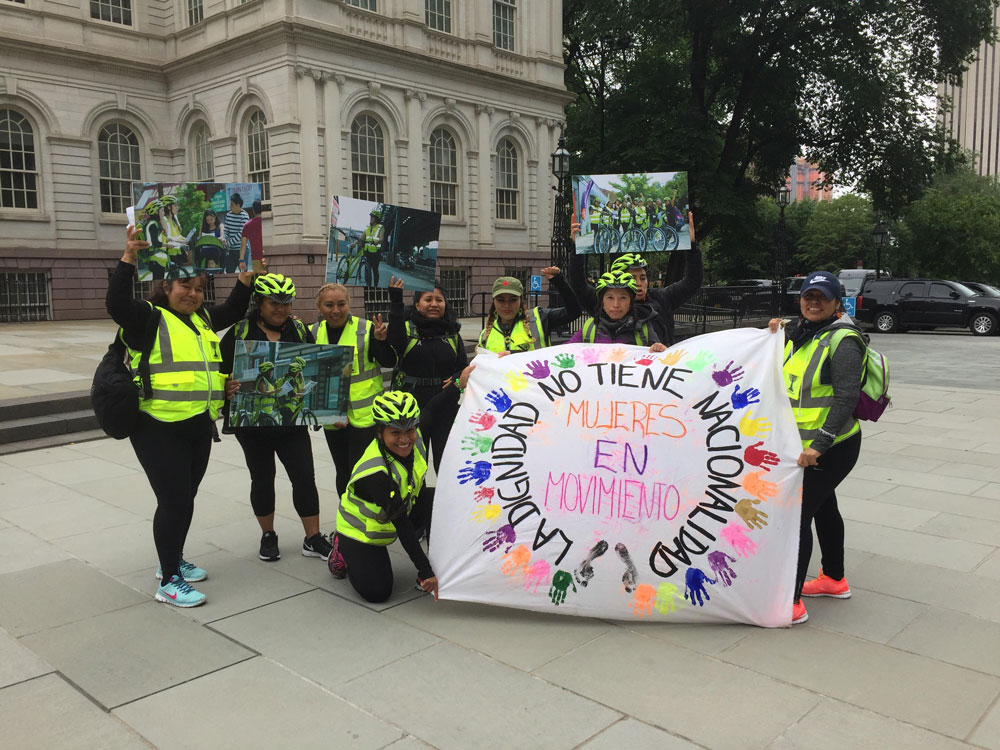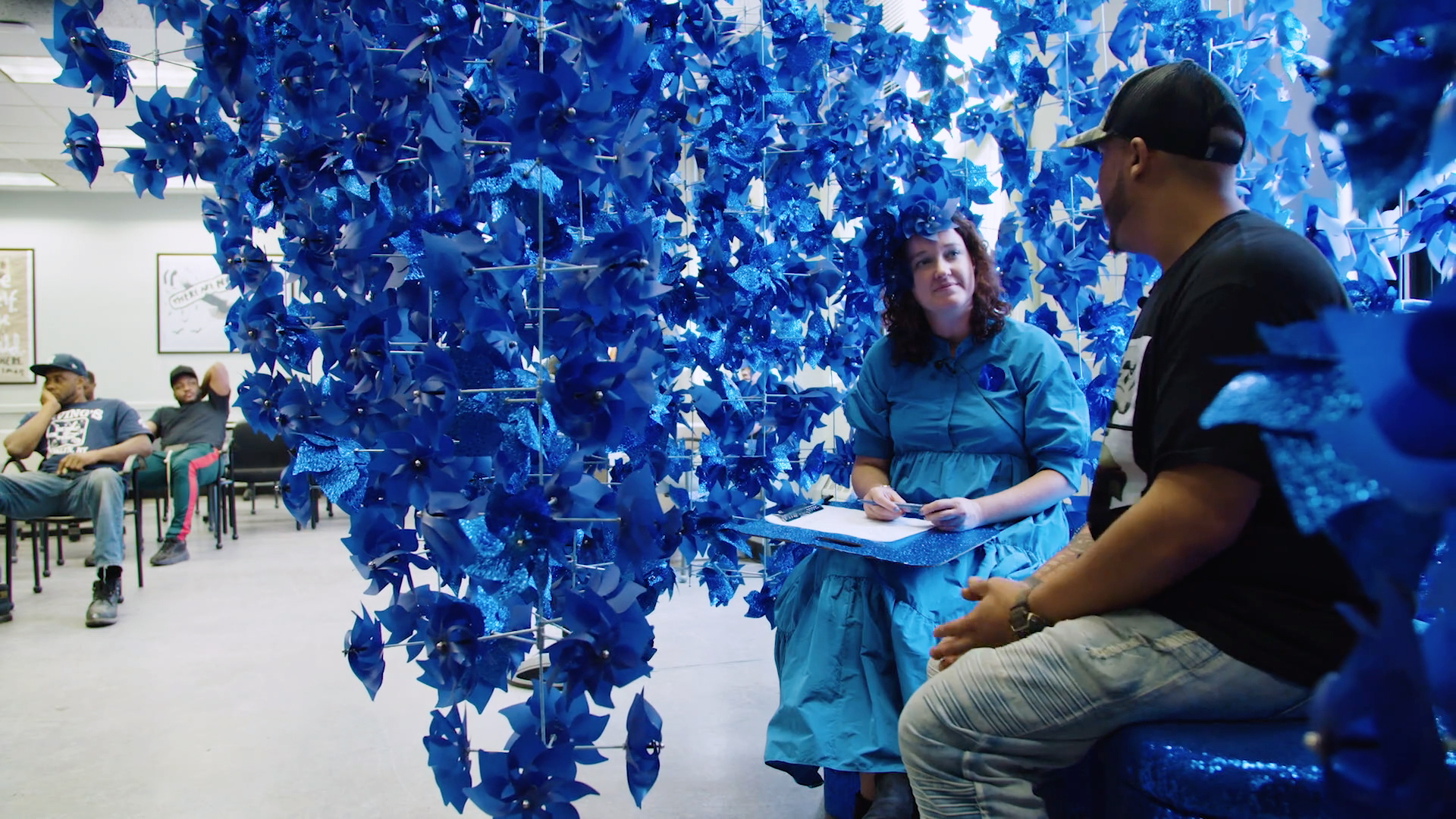Public Artists in Residence (PAIR)NYC Department of Cultural Affairs, Various NYC Agencies & Artists Public Artists in Residence (PAIR)
ProgramThe New York City Public Artists in Residence (PAIR) program recognizes artists as creative problem solvers. It embeds artists in City agencies to carry out creative solutions to pressing civic challenges, at the same time expanding opportunities for artists. PAIR partnerships are typically one year long and begin with a three-month research phase during which artists and municipal partners get to know each other and define the project, which is carried out over the next 9 months. This profile highlights just a few recent PAIR projects. ProjectsTania Brugera & Mayor’s Office of Immigrant Affairs (MOIA), 2016 DCLA Commissioner Tom Finkelpearl selected Tania Bruguera to pilot the PAIR program. Finklepearl had worked with Bruguera previously when she founded the organization Immigrant Movement International in Corona, Queens. Bruguera’s PAIR project, CycleNews, hoped to create mutual trust between government and immigrant communities. Bruguera collaborated with Corona-based art/organizing collective Mujeres en Movimiento. The Mujeres received training from MOIA staff about migrant rights and available city resources. They also worked with Bruguera and participatory design group Kollectiv Migrantas to create pictographic print materials about immigrant rights and services. The Mujeres hit the streets on neon yellow bikes to spread the word about what they learned, have conversations, and pass out materials and surveys—creating a two-way, trusted information flow between migrants and the City. They had conversations with almost 7,000 people, received more than 2,000 surveys, and distributed 18,500 pamphlets.
Lost Collective & Administration for Children’s Services (ACS), 2016 The Lost Collective worked with 30 LGBTQIA youth living in five foster homes to open up creative spaces in their lives. The Collective, four energetic and inquisitive theater artists of color, had previously produced a play about experiences in the foster care system. They visited each group home and got to know participants through conversation, theater games, and field trips to cultural events that emphasized LGBTQ characters and issues. In response to some of these conversations, the Lost Collective helped participants create short experimental videos that centered youth voices and vision. The films included poetry and music and explored the makers’ past, present, and future. Lastly, the Lost Collective invited guests to each home according participants’ interests, including a martial artist, a voguer, and a chef. The project culminated at the East Village’s Nuyorican Café where participants presented their photographs and paintings, screened their films and performed live to an audience of almost 100 ACS and DCLA staff members. This celebration and represented a unique moment in which city officials focused their attention on these particularly marginalized youth voices. Rachel Barnard & Department of Probation (DOP), 2018 Social practice artist Rachel Barnard, who was trained as an architect, collaborated with probation officers (POs) to create Wisdom Pavilions, with the goal of strengthing relationships between POs and their clients (parolees). Barnard led workshops with POs in which they designed fantastical, temporary structures that became the basis for the Pavillions— architectural spaces installed within otherwise stark DOP waiting rooms. The artist and her team of “art-listeners” will use the pavilions to have guided one-on-one conversations with POs and clients. Barnard will synthesize the information gathered into simple art-infused acts that will help improve PO-client relationships. The project’s intent is threefold: to develop an intimate picture of who makes up the probation community; re-center the voices of those who are most impacted by the criminal justice system; and develop insights into DOP culture and structural barriers that clients face. 
Artist Tatyana Fazlalizadeh & NYC Commission on Human Rights (CCHR) CCHR holds hearings on human rights issues, publishes reports, makes and enforces policy, and provides training and community education, and wanted to add art to their engagement strategies. CCHR Commissioner Carmelyn Malalis states “ If we do this work right, people will feel seen not as victims, but as amazing and fabulous and deserving of dignity.” The CCHR commissioned Fazlalizadeh to create a series of her large street portraits of women that call out gender-based street harassment and anti-black street harassment. The artist created postcards that ask pointed questions about racism and harassment and collected responses, and she interviewed women of color about their everyday stories of harassment. This first-person experience was an important aspect of the project for CCHR, as it reflects the issues they work on. From these stories, Fazlalizadeh created large portraits of women and incorporated text from the interviews into the image. These portraits are being installed as murals at CCHR-related sites across the City. InstigatorCommissioner of the NYC Department of Cultural Affairs Tom Finkelpearl. PAIR was inspired by artist Mierle Laderman Ukeles’ residency with the NYC Department of Sanitation since 1977. It was developed by DCLA Chief of Staff Shirley Levy and former staff member Diya Vij. Partnership StructureArtist as independent contractor, embedded in city agencies for 12-18 months. The artist, host agency liaisons, and other agency staff first get to know each other over 3-6 months, and then the artist carries out a public-facing project for the remainder of the residency year. Artist’s Approach:Each artist creates a distinctive project in response to a civic issue and in collaboration with the agency hosting them. FundingThe artist/s receives $40,000, split between DCLA and the host agency. (The maximum a City agency can pay is $20,000 for a no-bid contract.) Additional private funding is sourced on a case-by-case basis. Challenges
Impact and OutcomesPAIR is bringing visibility to the arts as a significant civic tool, and puts it on agencies’ radar across the board. Outcomes include:
Success Factors
Lessons Learned
|